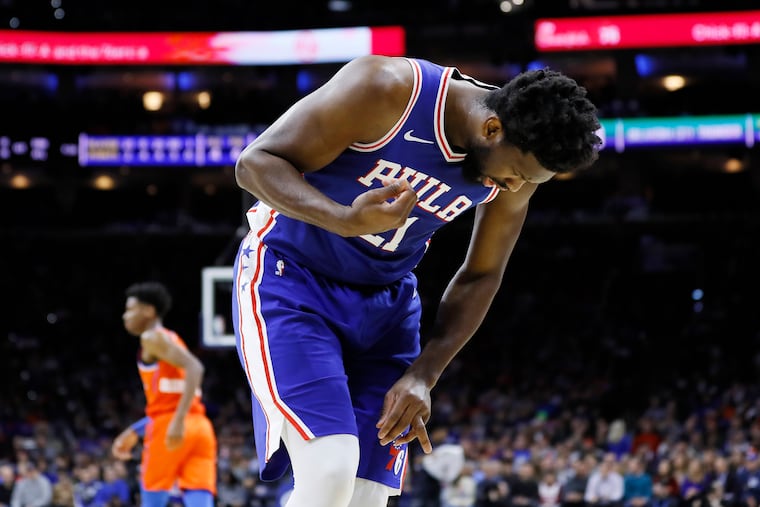What Joel Embiid’s hand surgery could mean for his future with the Sixers
The Sixers center will need four weeks for his torn ligament to heal back to the bone of his left ring finger, followed by physical therapy. Surgeons explain what's involved.

Joel Embiid had surgery Friday to repair a torn radial collateral ligament in the ring finger of his left hand, a procedure that typically requires a month of healing followed by several weeks of physical therapy, sports medicine specialists say.
Professional athletes commonly pursue a more aggressive timetable on physical therapy than nonathletes, seeking to recover flexibility in the repaired joint as fast as possible. But all patients need at least four weeks of healing before moving on to that step, said Pedro Beredjiklian, chief of the hand and wrist service at Rothman Orthopaedic Institute.
“Initially, it’s really the sutures that are holding the whole thing together,” he said. “Sutures can pop.”
A dislocated finger means that the ligament has torn away from the bone to some degree. Some of these injuries will heal without surgery.
But in photos from Monday’s game against the Oklahoma City Thunder, Embiid appears to have dislocated his finger at the knuckle where it meets the hand. Beredjiklian, who is not involved in Embiid’s care, said dislocations at that joint are more likely to require surgery, as compared with dislocations in the two knuckles farther up the finger.
For a right-handed basketball player such as Embiid, the left hand is held to the side of the ball to stabilize a jump shot, so the condition of the ring finger in that hand is less important for that purpose, the Rothman surgeon said.
But basketball players must be able to use either hand to shoot layups, dribble, and swat the ball away from opponents. For those tasks, the ring finger is in the thick of the action, and the success of Embiid’s surgery is likely to mean a great deal for his future performance.
Physical therapy is crucial, as it prevents the patient from developing too much scar tissue, thus maximizing mobility, Beredjiklian said.
“Losing mobility in that little joint is a big deal,” he said. “It’s very difficult to function afterward.”
In the past, surgeons would repair a torn finger ligament by drilling holes into the bone and reattaching the ligament to the bone with sutures. Now they use suture anchors — little implants that are screwed into the bone with sutures already attached, allowing for a faster surgery.
Embiid has suffered more than his share of injuries, prompting his coaches to keep him out of some games to preserve his fitness for the playoffs. Some fans hate this approach, called “load management,” preferring to see the star athlete on the court as much as possible.
But medically speaking, this strategy may be sensible given Embiid’s extreme size. Variously listed at 7 feet tall or 7-foot-2, with a weight of 280 pounds, the Sixers center may be at higher risk of certain injuries.
A heavier body places proportionately more strain on the joints, biomechanics experts say.
And his long arms are subject to more torque than those of a shorter-armed person. That phenomenon is familiar to children on a playground teeter-totter. The farther out from the center they sit, the easier it is to lift the person on the other side.
Translation: When force is applied to the end of Embiid’s long arms, less force is required to bend them out of position than if his limbs were shorter.